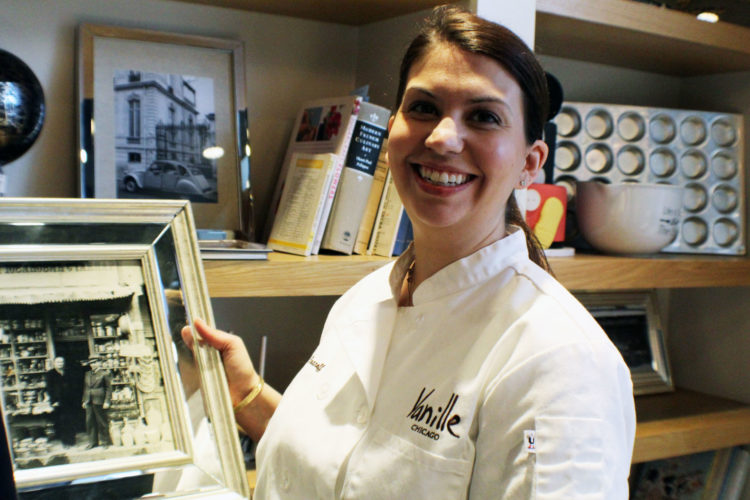
Entire industries and entire brands have been turned upside down due to the coronavirus, social unrest, and changing economic conditions. And one group facing even more uncertainty is challenger brands.

According to the Challenger Project, a challenger brand is defined primarily by mindset. A challenger brand has business ambitions larger than its conventional resources and is prepared to do something bold – usually against the existing conventions of the category – to offer something substantially new or disruptive. Challenger brands are often more focused on what they are challenging – concerning category drivers or customer experience, for example, – than who they are challenging.
Challenger brands are often viewed as underdogs, and oftentimes do not have the brand-cache or resources that industry leaders do.
According to Ad Age, in addition to being out-resourced by the big fish, the little fish must fight inertia – an unwillingness to change on the part of the retailer, customer, or prospect, because the psychological rewards of routine are so strong. The challenger must introduce new criteria of choice into the category, and this must be driven by a strong belief in how the category should be. The challenger needs absolute conviction to fuel a relentless stream of innovations, big and small.
By definition, challenger brands must think differently, both creatively and strategically, than the brands that currently exist in their space. They challenge the status quo, shake up the foundation of the industry, and solve problems that leading organizations don’t see or can’t solve.
All of this becomes even more complex during times of economic uncertainly, much like today, when consumer’s priorities, values, and behaviors are rapidly changing. In light of coronavirus, challenger brands are facing even greater competition and barriers to entry as they vie for a share of consumers’ minds and wallets.
So, how can challenger brands break though?
It is extremely important, now more than ever, for challenger brands to demonstrate a clear, impactful brand purpose, as it will better position them to break through the noise.
A well-known, wildly successful challenger brand is Warby Parker, which completely shook up the eyewear category. In 2010, founders Neil Blumenthal, Andrew Hunt, David Gilboa, and Jeffrey Raider, decided to collaborate and fix the issue of eyewear being too expensive. They challenged some of the largest brands in the industry, including Ray-Ban and Oakley, as well as many of the large US retail chains, including Pearl Vision and Sunglass Hut.
Warby Parker founders saw that because the same players had been dominating the market for so long, there was no real change or innovation going on. Being outsiders to the industry enabled the co-founders to take a completely fresh approach, rethinking the brand and purchasing experience both online and in-store. By being vertically integrated and manufacturing glasses in-house, Warby Parker could offer a product that would normally retail for $500, for just $95 – competing on style, but beating similar brands on price.
Amidst coronavirus, Warby Parker remained true to its brand promise and implemented new initiatives, and adapted existing programs, to meet the urgent needs of consumers. When COVID-19 disrupted distribution for the Buy a Pair, Give a Pair program, Warby Parker’s leadership adapted the program to provide PPE to local, frontline workers.
According to Warby Parker leadership,
“We started Warby Parker by reimagining everything that a company and industry can be. To do good—impacting the world in a meaningful way—became a guiding principle and remains one of our core values today. Now, in response to COVID-19, we’ve needed to evolve every aspect of our business, including figuring out new ways to make a positive impact on communities in need.”

A challenger brand that has broken through in Chicago is Simple Mills. About 7 years ago, Katlin Smith noticed a gap in the market for healthy, packed food products and decided to create her own brand of minimal-ingredient, gluten-free snacks, and baking mixes. Katlin was frustrated by long food labels filled with ingredients she couldn’t pronounce. So, since day one, her brand has remained true to its promise of simplicity and only uses ingredients that consumers can understand, feel good about, and pronounce. Simple Mills’ unwavering dedication to this promise struck a chord with consumers and has earned the brand national attention.
In an interview with Simple Mills CEO and Founder, Katlin said,
“I thought one of the best places to get started was really lifting the standards of what sits in the center aisles of the grocery store.”

Although Simple Mills and Warby Parker are great examples, breaking through as a challenger brand does not always require your company to sell revolutionary products or services. Challenger brands can also disrupt the way that management, marketing, customer experience, operations, etc. are typically handled within a given industry, especially amidst all of the changes brought on by COVID-19.
Vanille Patisserie is a great example of this. Vanille redefines what it means to be a luxury brand, not only through their French-inspired cakes and pastries, but through customer experience. Instead of relying on the quality of their baked goods alone, Vanille emphasizes and elevates their customer experience in a way that makes them competitive with luxury brands, especially when money is tight amongst consumers.
Vanille Founder, Sophie Evanoff said,
“You’re not going into Neiman Marcus and spending $1,000 on a purse, but you can still come into Vanille and feel special and feel luxury with a $2 cookie.”

Amidst COVID-19, Vanille’s commitment to customer experience has not waivered. The brand announced its new “Chicago Strong Meals” program, which provides breakfast and lunch meal kits to essential workers.
Even challenger brands in highly regulated industries, such as health insurance or financial services, have the opportunity to breakthrough. For example, Network Health had provided health insurance in Wisconsin for nearly 30 years, but less than 1 in 3 consumers and 4 in 10 businesses had ever heard of them. This lack of brand awareness was hurting their ability to compete with national health insurance companies.
AE Marketing Group rebranded Network Health with a mix of strategy and new creative that was not seen in the marketplace at the time. Together, we saw an opportunity to use language to break through the confusion caused by complex industry jargon, and the “We Speak Your Language” campaign was born. With a company policy to, “End the Jargon,” the entire organization was re-trained, materials were re-written, and content was re-designed to cut through the confusion and clutter seen throughout the industry. As a result, employer familiarity rose from 46% to 72% – the highest among all competitors in the market – and consumer awareness rose from 32% to 58%. Network Health became the most preferred health insurer in the NE Wisconsin market and received the highest brand honors at the 33rd Annual Telly Awards.

To breakthrough as a challenger brand, you must first identify a source of conflict or a gap within your industry. This can be a gap in product offerings, customer experience, marketing tactics, brand identity, etc. It could also be a gap brought on by new and unforeseen circumstances, like a pandemic or economic recession, that change buyer behaviors and shifts priorities.
Conflict makes stories compelling, and if we look at challenger brands that breakthrough in their markets with limited resources, it is often their compelling stories that create buzz. However, as discussed in our Marketing Minute on storytelling, it is important to be authentic. Find passion in the change you are creating in the industry and let your point of difference touch every aspect of your organization.
Once your brand has found its niche, you must make it visible. As discussed, challenger brands often have limited resources compared to leading brands, so marketers must be savvy and creative when building visibility, outmaneuvering instead of outspending competitors. Social media is a great place to cultivate a strong following, communicate brand identity and personality, and reach buyer personas.
If your brand’s products or services are visibly making an impact in the market, earned media will follow and so will loyal customers.
If you are a challenger brand that is struggling to break through, be sure to contact us to learn how we can help.